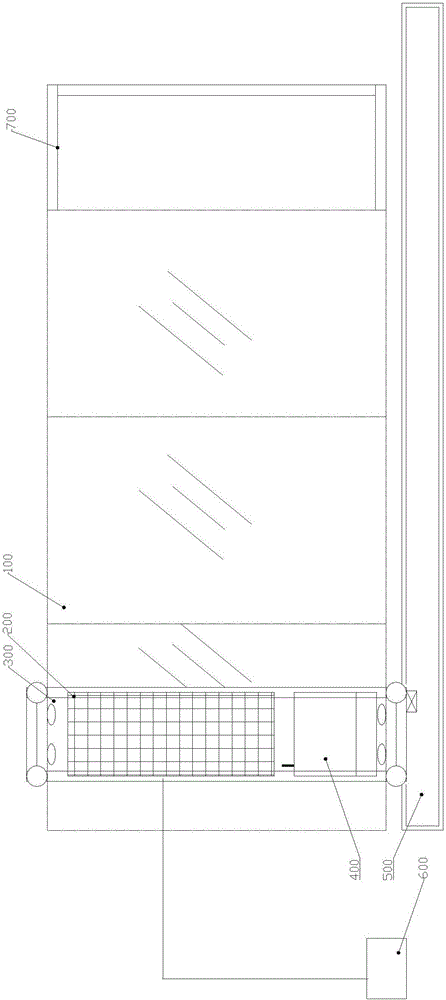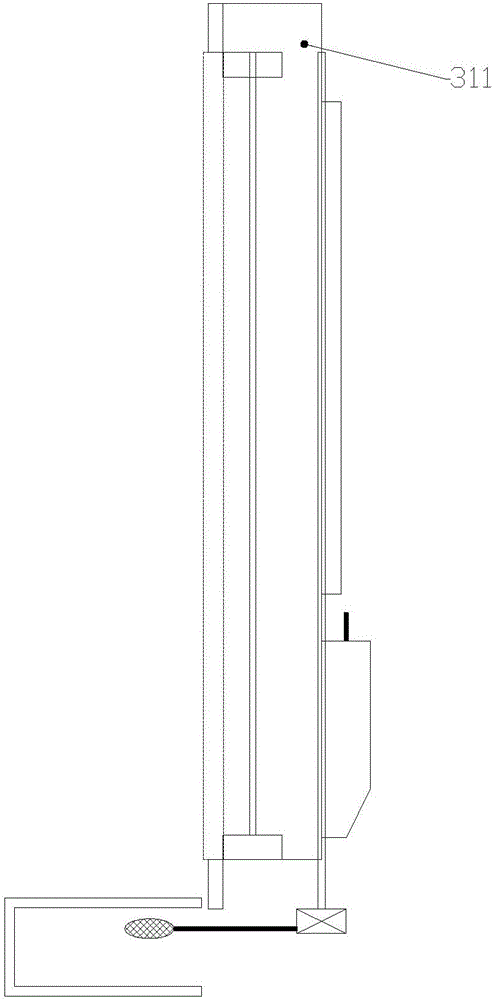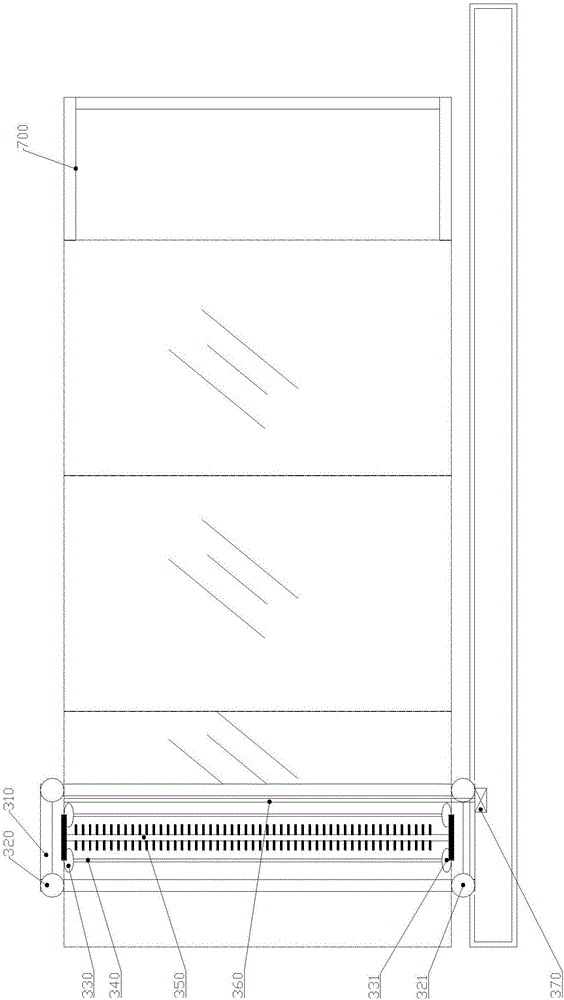Cleaning robot suitable for photovoltaic assembly
A technology for cleaning robots and photovoltaic modules, applied in the field of cleaning robots, can solve the problems of difficult control of cleanliness, long cleaning cycle, and the need for operators, etc., and achieve the effect of saving labor costs, reducing labor intensity, and uniform cleaning force
- Summary
- Abstract
- Description
- Claims
- Application Information
AI Technical Summary
Problems solved by technology
Method used
Image
Examples
Embodiment Construction
[0031] The specific implementation manners of the present invention will be further described in detail below in conjunction with the accompanying drawings and embodiments. The following examples are used to illustrate the present invention, but are not intended to limit the scope of the present invention.
[0032] Such as Figures 1 to 4 A cleaning robot suitable for photovoltaic modules, including a robot main body 300, is different in that: in order to facilitate the installation of the robot on the photovoltaic module 100, and facilitate the robot to complete all-round cleaning and avoid cleaning dead ends, adopt The robot main body 300 includes a frame 310 on which displacement auxiliary wheels are arranged. Meanwhile, the frame 310 is also provided with a lateral displacement driving device. The present invention is provided with cleaning device in frame 310, and one side of frame 310 is provided with sump 500, and spray pipe 360 is installed on frame 310, and sump 5...
PUM
 Login to View More
Login to View More Abstract
Description
Claims
Application Information
 Login to View More
Login to View More - R&D
- Intellectual Property
- Life Sciences
- Materials
- Tech Scout
- Unparalleled Data Quality
- Higher Quality Content
- 60% Fewer Hallucinations
Browse by: Latest US Patents, China's latest patents, Technical Efficacy Thesaurus, Application Domain, Technology Topic, Popular Technical Reports.
© 2025 PatSnap. All rights reserved.Legal|Privacy policy|Modern Slavery Act Transparency Statement|Sitemap|About US| Contact US: help@patsnap.com



